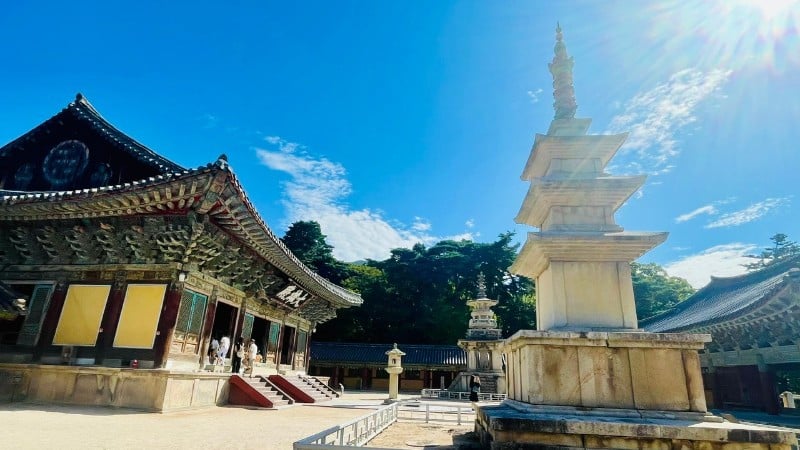
Located in North Gyeongsang Province, Gyeongju is only about 1 hour and 40 minutes by car from Busan. It was once the capital of the Silla Dynasty (from 57 BC to 935 AD), so traces of the dynasty are still clearly visible in many of the landscapes and architecture.
As soon as the car entered the gateway of this city, we felt the old, nostalgic atmosphere permeating the small village roads, the temple roofs, the ancient houses... In many famous places, even modern supermarkets or coffee shops like Starbuck are designed in the architecture of ancient tiled roof houses... All of them paint a picture of Gyeongju in harmony with peace and quiet. Coming here, it feels like all the worries are left behind...
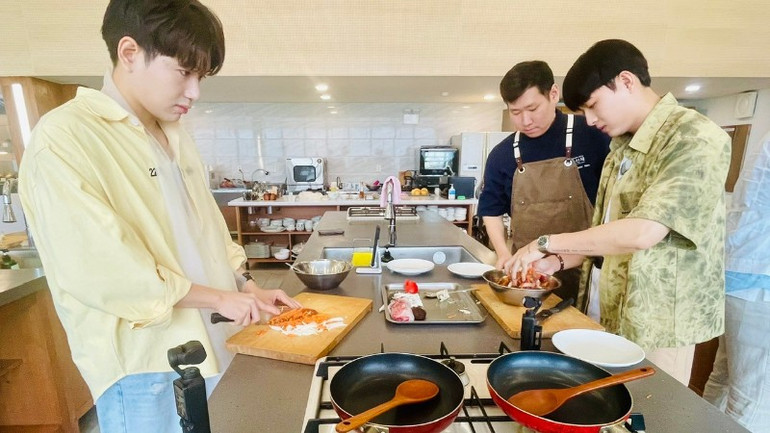
We started our 2-day journey to explore Gyeongju with our first destination being Laseonjae - a unique Silla-era culinary experience founded by first-generation Silla traditional culinary master Cha Eun-jeong and second-generation chef Kim Jeong-hoon.
By offering visitors diverse experiences such as exploring Silla cuisine, making royal desserts and listening to stories about kings, K-food cooking classes for foreigners, etc., Laseonjae contributes to effectively promoting traditional Korean cuisine to a wide range of domestic and foreign tourists.
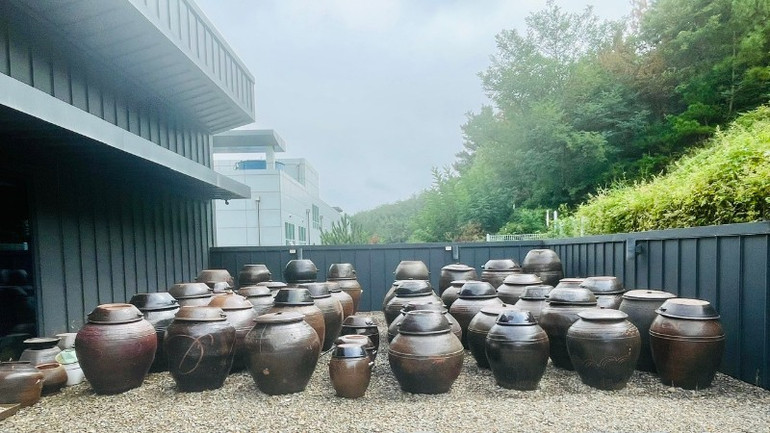
With aprons, knives, cutting boards and cleanly prepared ingredients, we transformed into real Silla chefs in the kitchen under the specific guidance of Chef Kim Jeong-hoon. The homemade dishes were placed on the table, combined with some dishes made by Laseonjae's chefs, bringing wonderful taste experiences.
Chef Cha Eun-jeong did not forget to give us a special “gift”, which was a certificate with the name of each person who participated in the culinary experience, which made everyone extremely excited.
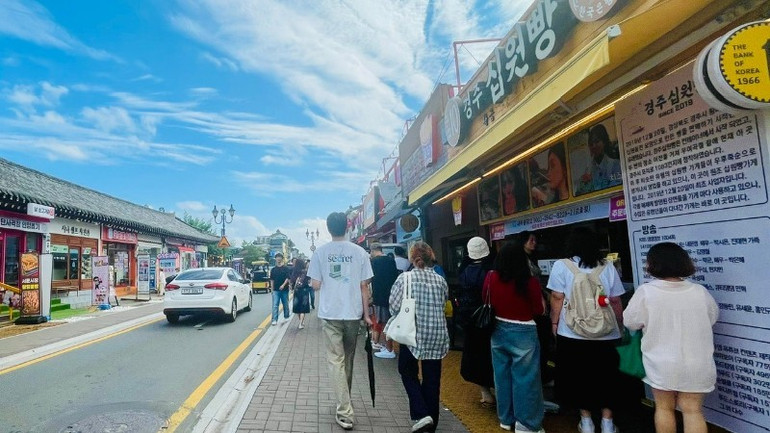
Our next destination was Hwangridan-gil, a famous 1.5km tourist street in Gyeongju, which is also the “hometown” of the cheese coin cake that has been a hit recently. We did not arrive in the evening - when the street is most crowded - but arrived at noon, but the atmosphere here was still extremely bustling.
On all the streets, people were bustling about, most of them young people. They did not hesitate to line up in front of the stores to enjoy the “special” dishes here.
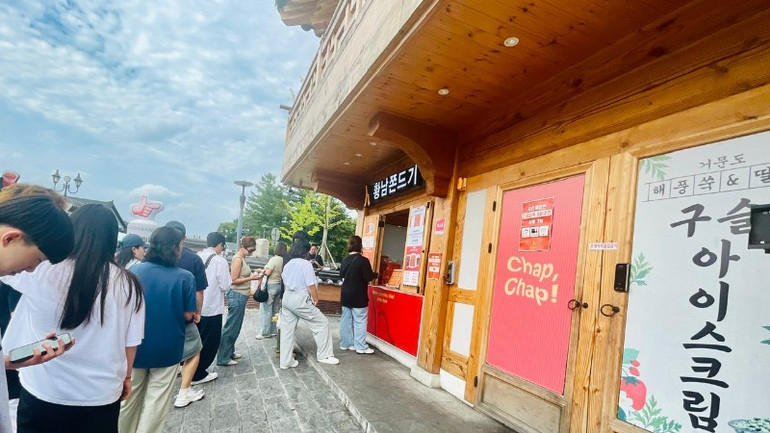
I especially love the feeling of walking along the street, because not only can my taste buds be awakened with diverse cuisine, but I can also see traditional hanok houses that have been converted into restaurants, craft shops, art galleries...
Just turn into any small alley on the street, you can find small cafes and fashion stores designed in ancient style - where everyone can find extremely "chill" corners to enjoy the atmosphere of the intersection between traditional architecture and modern life of the heritage city.
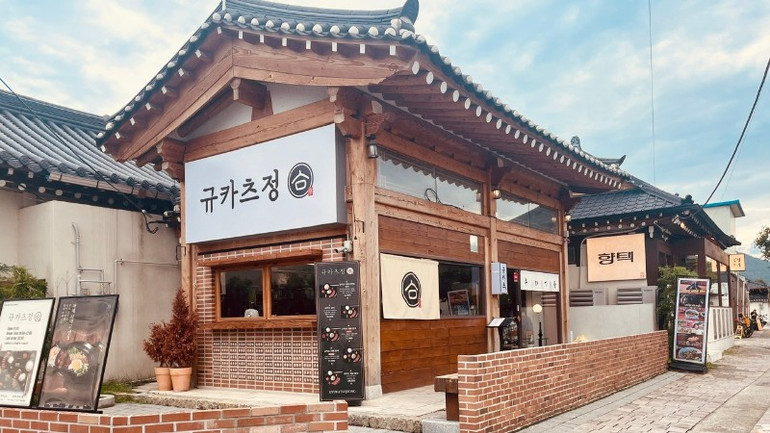
Located right next to Hwangridan-gil is a must-see destination when visiting Gyeongju, which is the Daereungwon ancient tomb complex, the resting place of kings and nobles of the Silla dynasty. If it weren’t for the tour guide’s introduction, we would have thought we were walking in a park with large and small green hills.
It is surprising to know that the tombs in Daereungwon are all built in the style of mounds with the shape of hills. In each tomb, there are artifacts buried with the owner to serve the life after death of the deceased.
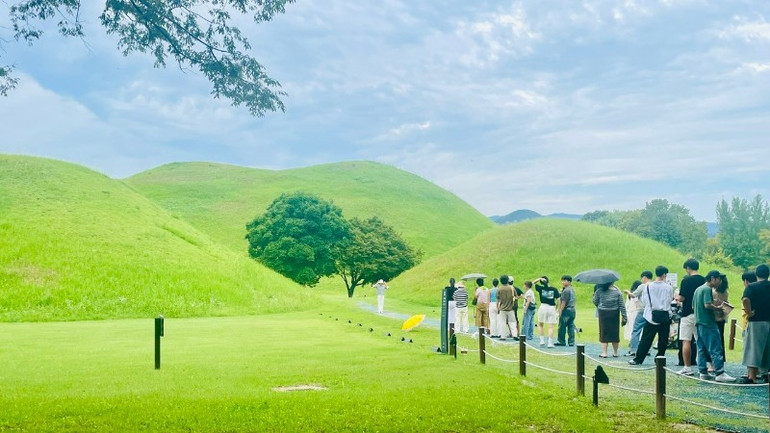
This mausoleum is not only of historical value but also a testament to the burial techniques and spiritual customs of the Silla Kingdom. Interestingly, with its creative approach to tourism, this mausoleum park is becoming an extremely "hot" attraction for tourists when coming to Gyeongju.
From Daereungwon, visitors can also walk to Cheomseondae Observatory (Astronomy Tower) – one of the famous attractions considered the symbol of Gyeongju. This is the oldest observatory in Korea, and also the oldest existing observatory in Asia.
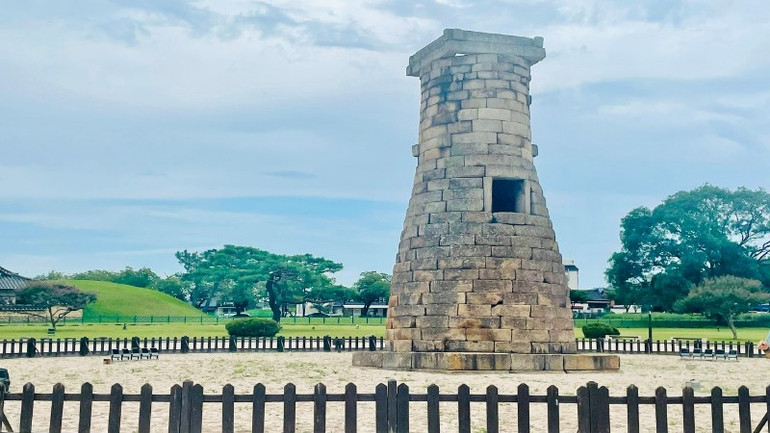
Built in the 7th century during the reign of Queen Seondeok, this granite structure is nearly 9m high, with a unique cylindrical structure consisting of 365 stone blocks symbolizing the number of days in a year, and 12 stones forming the base symbolizing the number of months in a year.
This observatory was used for star observation, agriculture and ancient astronomy, showing that the Silla Dynasty was very interested in astronomy. It is the 31st national treasure of Korea and a prominent heritage in the Gyeongju ancient capital heritage complex.
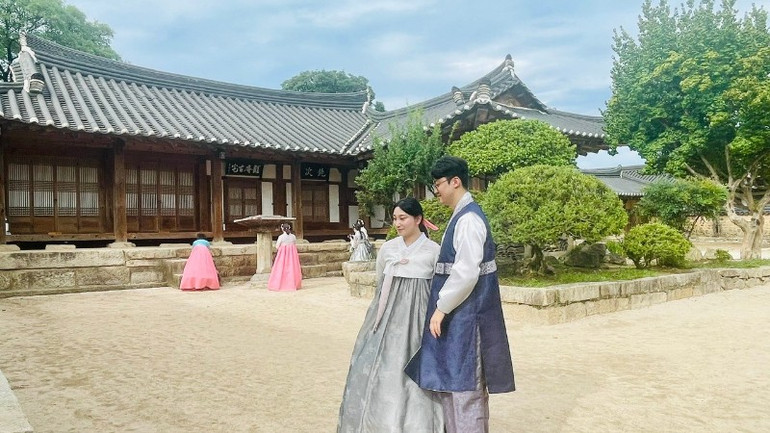
Also located in the heart of Gyeongju Heritage Area is Gyochon Traditional Village - an ancient village built in the 14th century and flourished during the Jeoson period (1392-1897). This was once home to noble families and officials of the time. Coming here, visitors will easily encounter houses with earthen floors and walls built from wood and earth, creating a space that is both ancient and close to nature.
Over hundreds of years, the village has maintained its traditional architecture and culture. Just by wearing a hanbok, visitors will immediately feel like they are characters in a Korean historical drama. This place is famous for the ancient house of the Choe family - a family admired by the local community not only for their careful management of a huge fortune over 12 generations, but also for their ethical, loyal, generous lifestyle and dedication to academics.
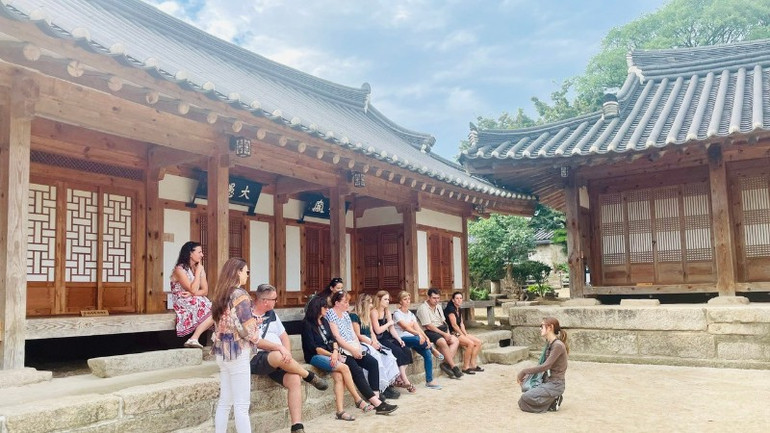
Strolling around the village, visitors can also visit shops specializing in traditional cuisine, attend glass-making classes, pottery making or learn tea ceremonies to gain a deeper understanding of life in Gyochon.
From the Choe family home, following the small road towards the Namcheon River, we were able to take in the beauty of Gyeongju’s famous Woljeonggyo wooden bridge. If you are a fan of the movie “The King: Eternal Monarch” starring Lee Min Ho and Kim Go Eun, you will easily recognize the appearance of this beautiful bridge in the movie.
The bridge was built during the Silla Dynasty but was destroyed by war and was restored with majestic traditional architecture in 2018.
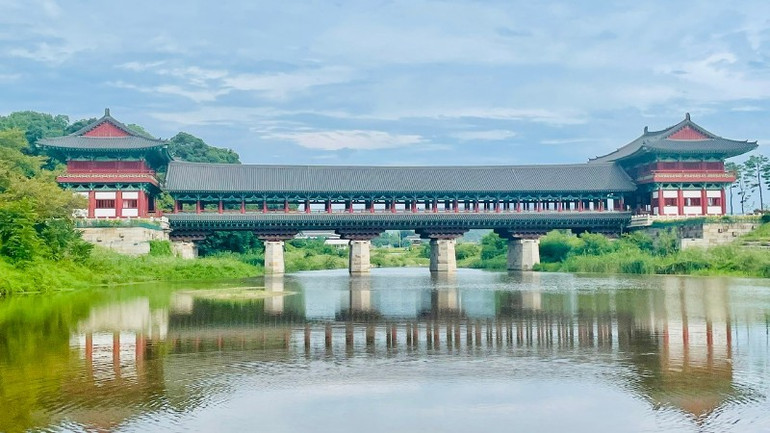
Connecting the two banks of the Namcheon River, the bridge is not only a transportation structure but also an important cultural and historical symbol of the ancient capital. If you want to explore a place that is both historical and magnificently beautiful, Woljeonggyo Bridge is definitely a destination not to be missed.
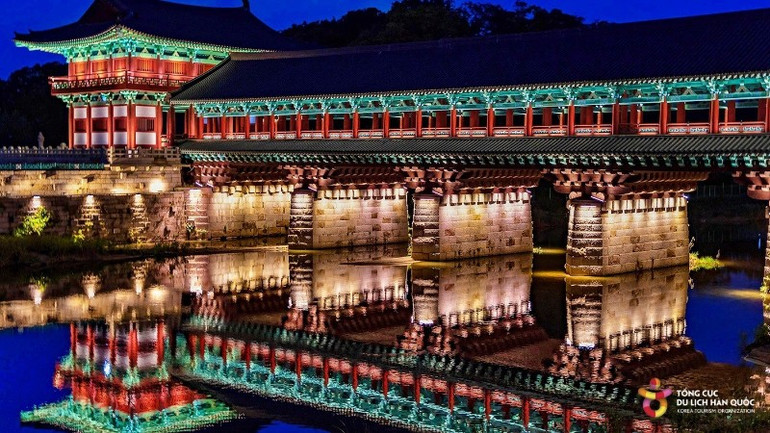
During the day, the bridge has a poetic, ancient beauty, combined with the surrounding nature to create a charming landscape painting; when night falls, when the brilliant lights reflect on the water surface, the bridge puts on a shimmering, magical coat. Walking on the bridge, stepping between the sturdy red wooden pillars, it feels like walking between the past and the present...
Contributing to the brilliant night lights of Gyeongju are Donggung Palace and Wolji Pond – a famous palace and pond complex built during the Silla Dynasty to host royal banquets.
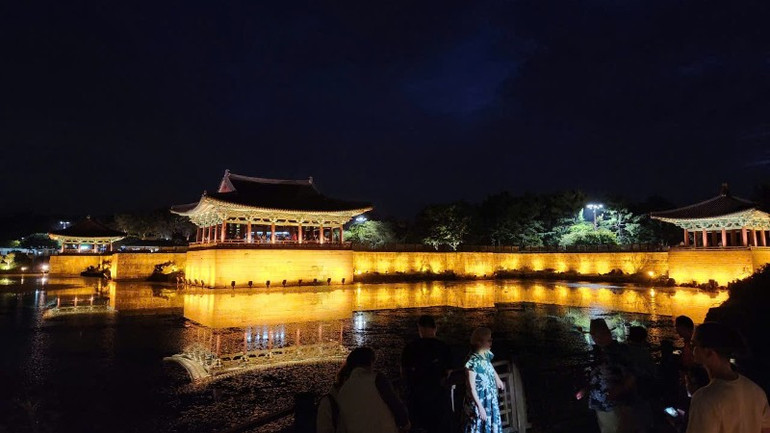
Looking at Donggung and Wolji at night, when the lights shine throughout the palace, reflecting the ancient architecture on the calm lake surface, everyone is captivated by the magnificent and splendid scene, as if looking at a vivid picture of the past heritage.
Our final destination in our journey to explore Gyeongju was Bulguksa Temple - one of the most beautiful ancient temples in Korea, recognized by UNESCO as a World Cultural Heritage.
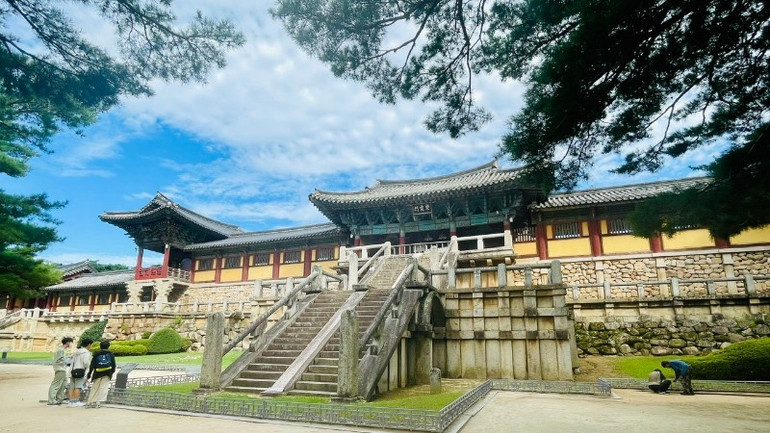
Bulguksa Temple was built during the prosperous period of the Sila Dynasty - a dynasty that worshiped Buddhism, and then expanded under the Goryeo and Joseon dynasties. However, due to war, the temple was burned down, and it was not rebuilt until 1604 and continued to be restored and repaired dozens of times over the following years.
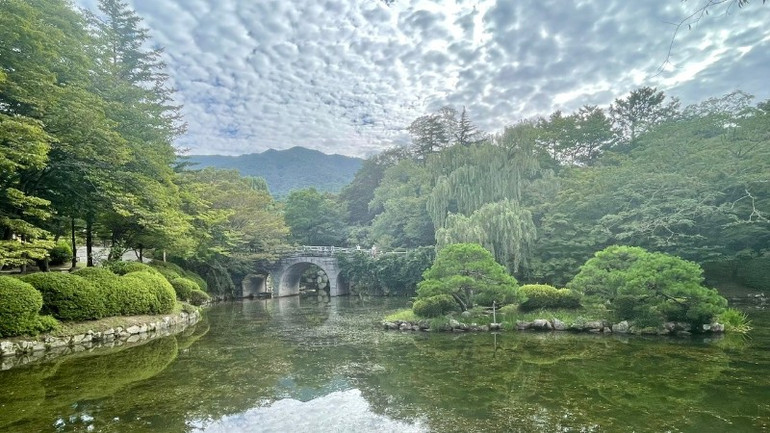
Bulguksa Temple is not only an important heritage that testifies to the flourishing period of Buddhism during the Sila Dynasty, but also an artistic masterpiece with profound historical value. The temple grounds feature many ancient structures such as Cheongun-gyo Bridge, Dabotap Pagoda and Seokgatap Pagoda, along with majestic buildings surrounded by majestic mountains.
Coming here, enjoying the fresh, cool air, leisurely walking in the peaceful space of the temple, everyone feels peaceful and quiet.
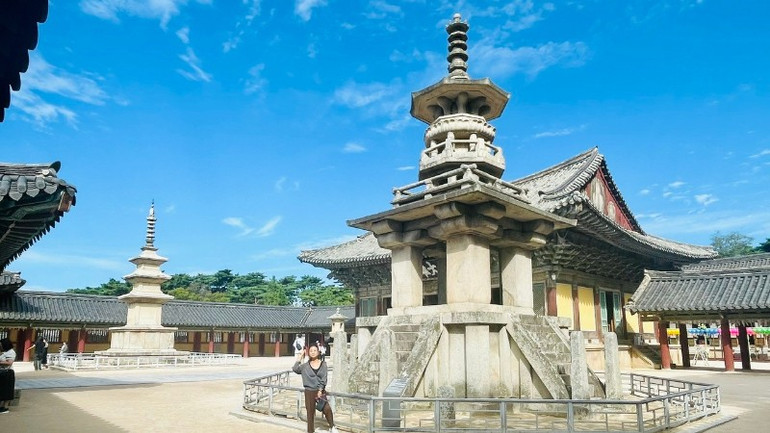
Joining us on our journey to explore Gyeongju, Travel Blogger Win Di (Ho Tan Tai) shared that he especially likes Gyeongju's way of doing tourism: Exploiting but still preserving the unique traditional culture. Here, each destination is associated with a historical story, and although it provides many modern business services such as shopping, cuisine..., there is also a subtle combination with traditional culture. This is a sustainable tourism development direction that not only helps Korean youth love their national culture more, but also promotes the traditional culture of the kimchi country to international tourists.
Win Di also said he was very impressed that every destination in Gyeongju has a tourist support center, even if it is just a small bridge. This helps create friendly and convenient experiences for tourists. According to Win Di, the ancient capital of Gyeongju is not only an ideal destination for middle-aged tourists who love nostalgia, but also a tourist destination that promises many surprises for young people who love nature and want to explore historical and cultural values.
The Asia-Pacific Economic Cooperation (APEC) 2025 Summit will take place in Gyeongju from October 31 to November 1, with the participation of 21 member economies. This is not only an opportunity for Korea to affirm its ability to organize large-scale international events, but also a historic opportunity for North Gyeongsang Province, especially Gyeongju, to promote its image, culture and potential for sustainable tourism development to international friends.
Source: https://nhandan.vn/kham-pha-gyeongju-co-do-ngan-nam-xu-kim-chi-post917119.html


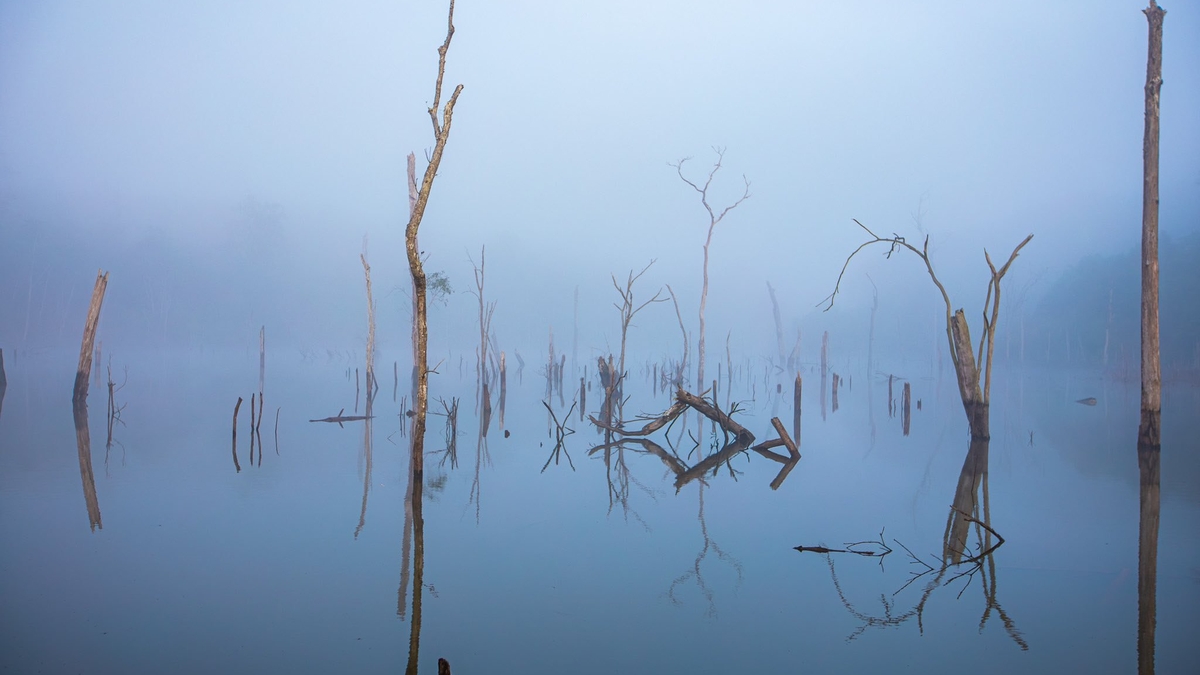
![[Photo] Prime Minister Pham Minh Chinh chairs meeting on nuclear power plant construction](https://vphoto.vietnam.vn/thumb/1200x675/vietnam/resource/IMAGE/2025/10/22/1761137852450_dsc-9299-jpg.webp)
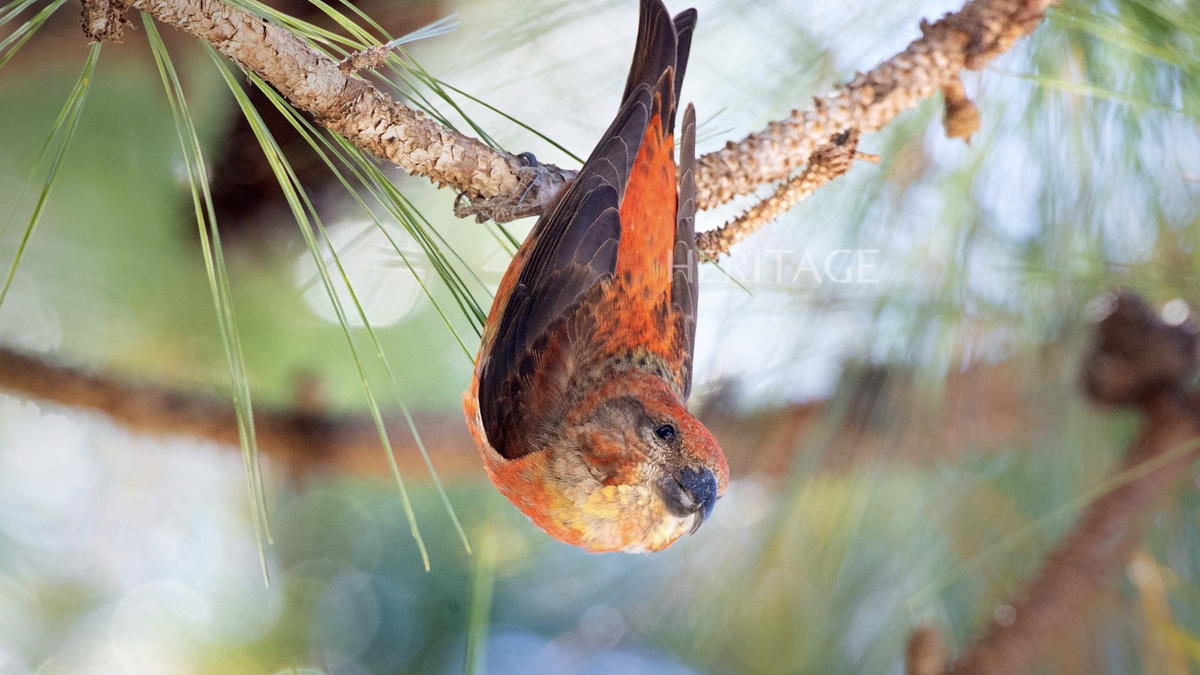






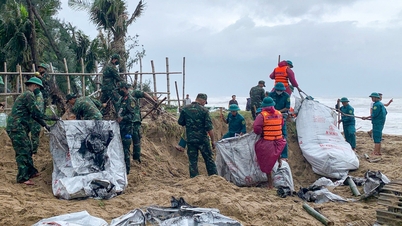

![[Infographic] Readers' Choice Awards honor countries with the world's leading cuisine](https://vphoto.vietnam.vn/thumb/402x226/vietnam/resource/IMAGE/2025/10/22/1761118048223_thiet-ke-chua-co-ten-40-png.webp)
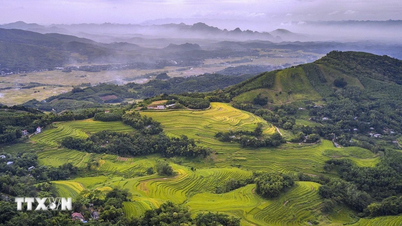

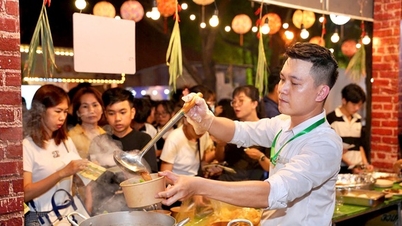






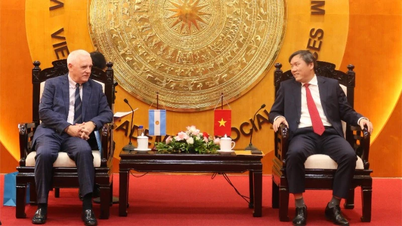
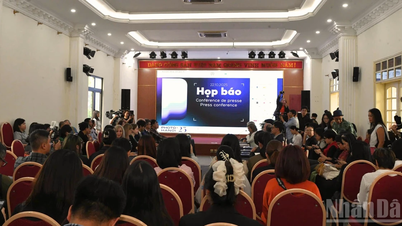

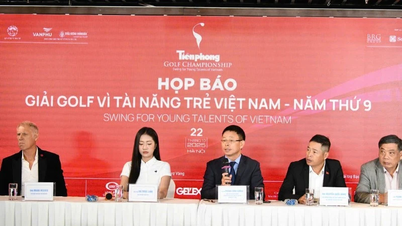
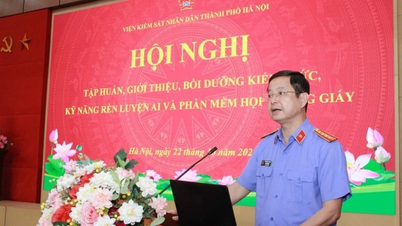








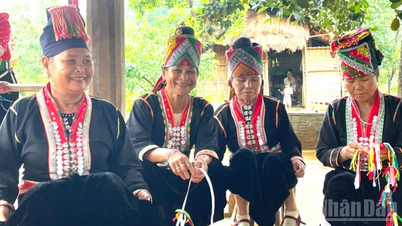


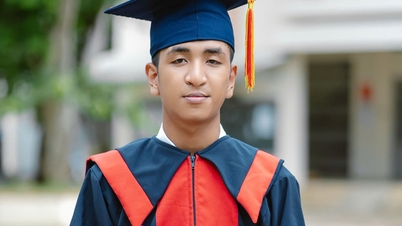




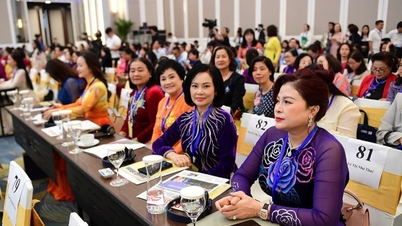


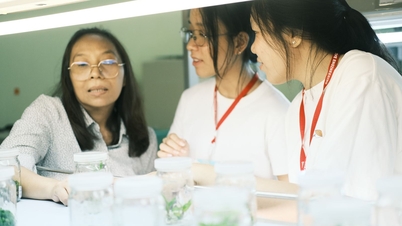

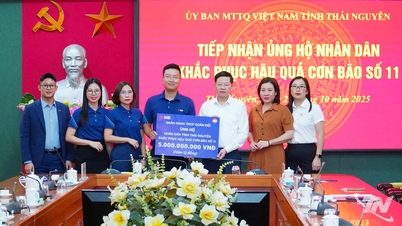

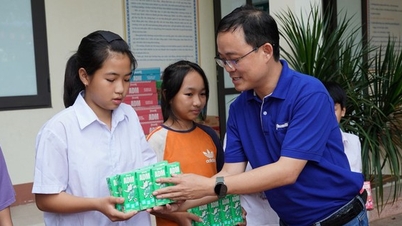

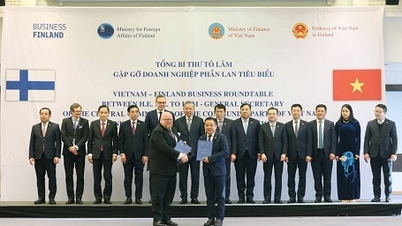

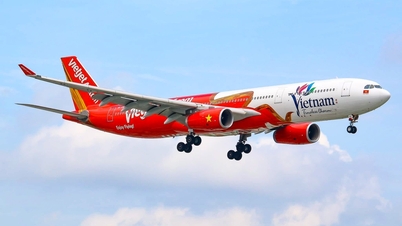
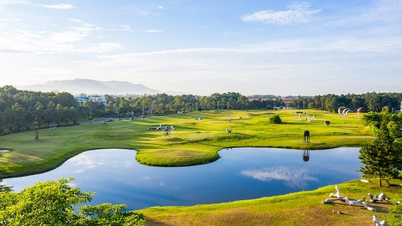








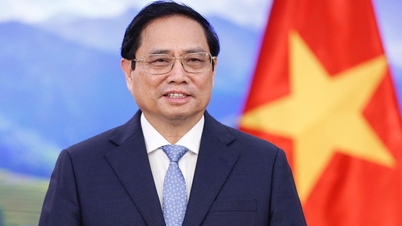

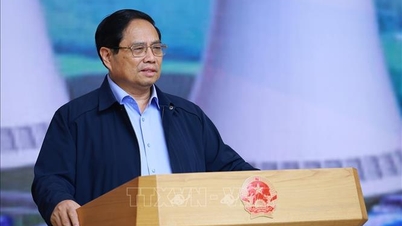

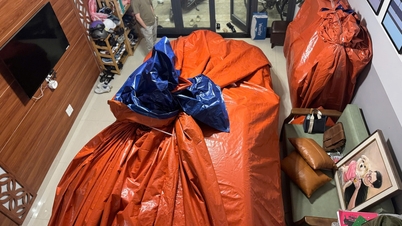
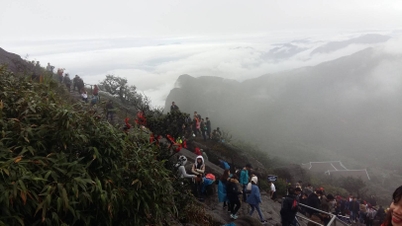

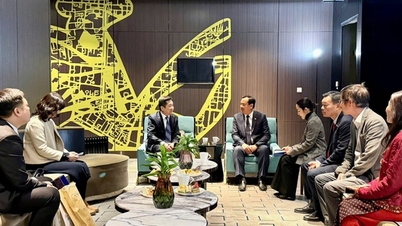

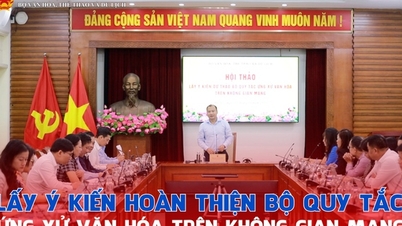
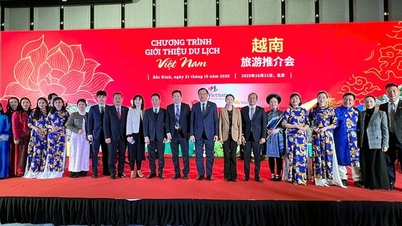
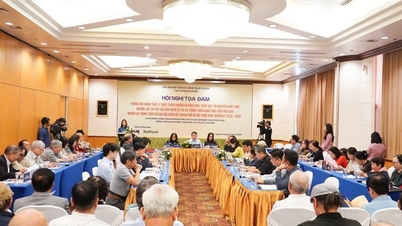
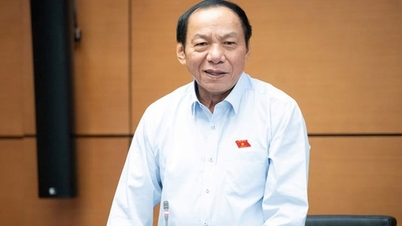
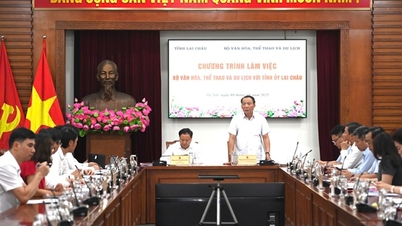
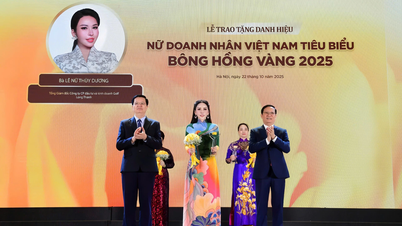

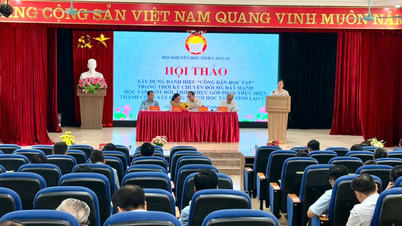

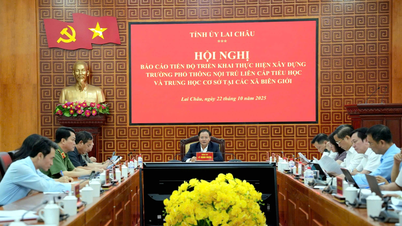
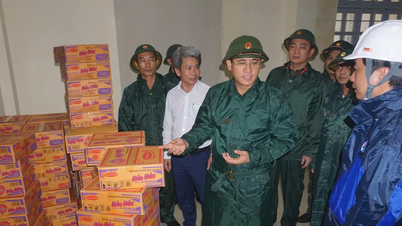












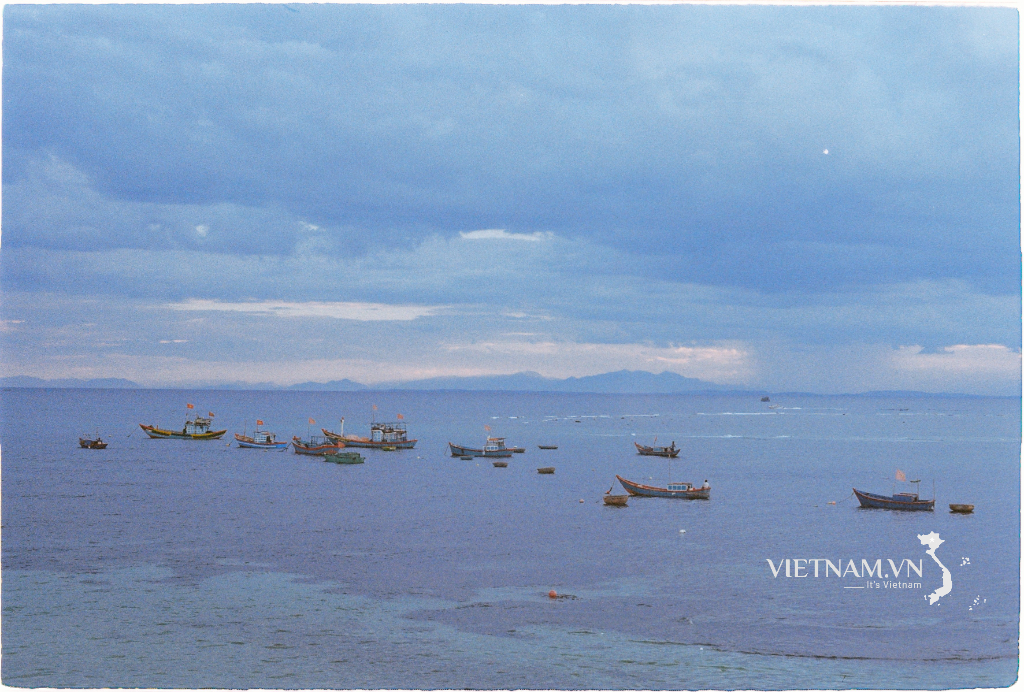



Comment (0)